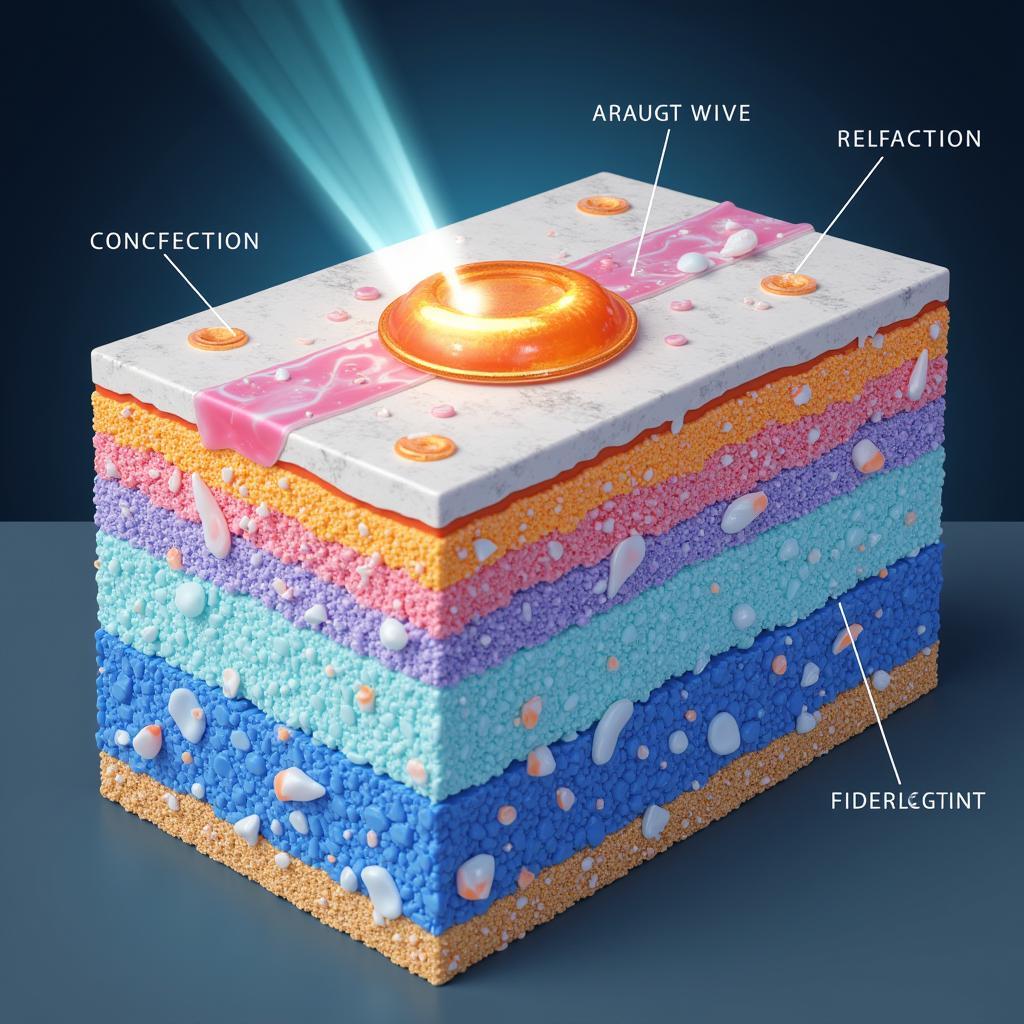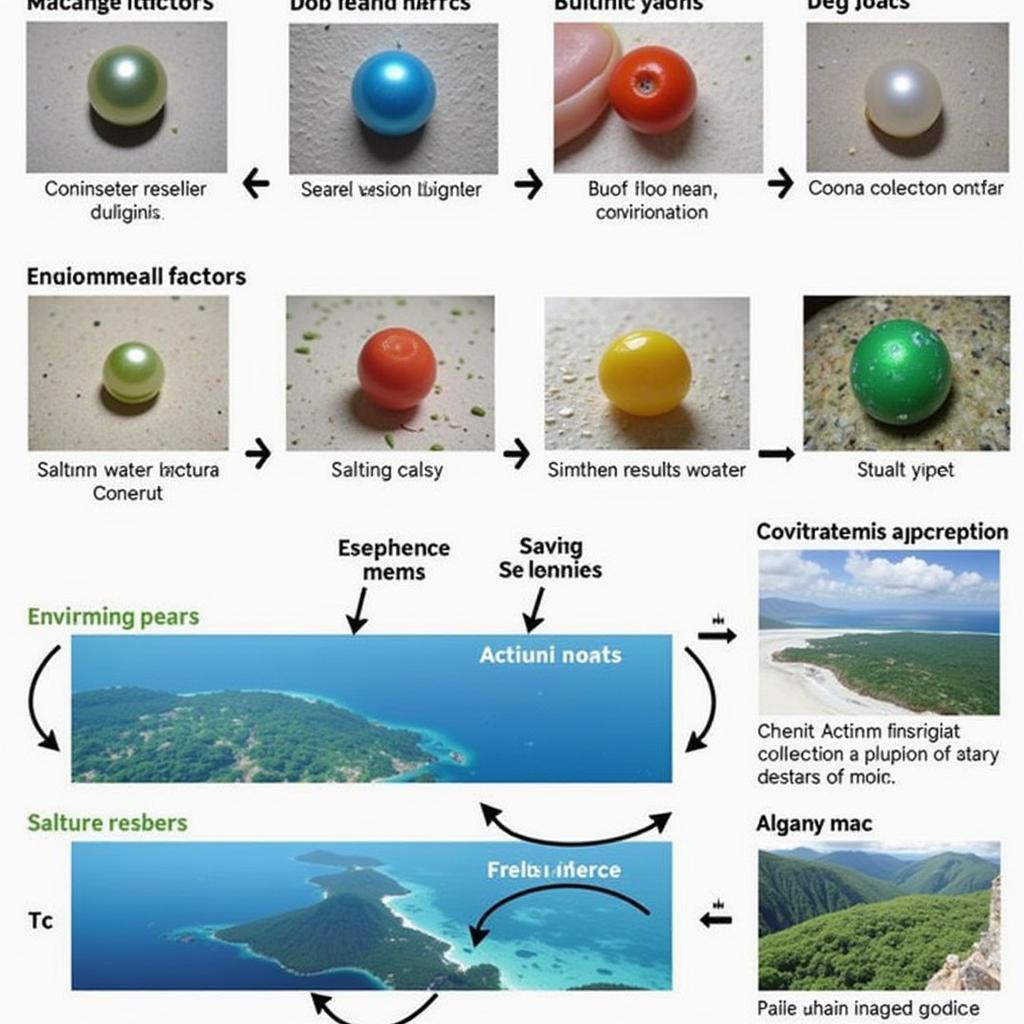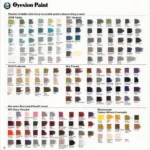Pearls, those lustrous gems of the sea, captivate us with their iridescent beauty. But how do pearls get their color? The answer lies in a fascinating interplay of light, nacre structure, and trace elements within the pearl itself. Understanding this process unveils the secrets behind the diverse palette of pearl colors, from classic white and cream to exotic black, gold, and even pink. Let’s delve into the science and artistry of pearl color formation.
After this short introduction, we will embark on a journey to understand how these colors are born, and what makes certain pearl colors more valuable. You might be interested in knowing what color pearl is most valuable.
The Science Behind Pearl Color
The primary factor influencing pearl color is the type of mollusk producing the pearl. Different species naturally secrete nacre with varying base colors. However, the main player in this chromatic symphony is nacre, also known as mother-of-pearl. This iridescent material is composed of microscopic layers of aragonite crystals and conchiolin, an organic protein. These layers act like tiny prisms, diffracting and reflecting light to create the characteristic pearl luster and color. The thickness and arrangement of these nacre layers influence the specific colors observed. Thicker layers tend to produce darker, more intense colors, while thinner layers create lighter, pastel hues.
The Role of Conchiolin and Trace Elements
Conchiolin, the organic protein binding the aragonite crystals, also plays a crucial role in color determination. It can impart a yellowish or brownish tint to the pearl, influencing the overall color. Furthermore, trace elements present in the mollusk’s environment, such as manganese, copper, or silver, can be incorporated into the nacre, adding further nuances to the pearl’s color. For example, manganese can create darker hues like black or gray, while silver can contribute to a creamy or silvery sheen.
 Pearl Color Formation: The Role of Nacre Layers
Pearl Color Formation: The Role of Nacre Layers
Factors Affecting Pearl Color
Several factors influence the final color of a pearl. Water temperature, salinity, and the availability of nutrients can all affect the mollusk’s physiology and the composition of the nacre it produces. Even the location where the pearl forms within the mollusk can impact its color. Pearls formed closer to the mollusk’s mantle tend to have more vibrant colors than those formed deeper within the tissue.
The Influence of Environment and Location
Environmental factors play a significant role in pearl coloration. For example, pearls cultivated in warmer waters often exhibit richer and more intense colors than those grown in colder climates. Similarly, the type of algae the mollusk consumes can also affect the color of the pearl.
 Environmental Factors Influencing Pearl Color
Environmental Factors Influencing Pearl Color
What About Dyed Pearls?
While natural pearl colors are fascinating, some pearls are treated to enhance or change their color. This is often done with lighter-colored pearls to achieve more desirable hues. Common treatment methods include dyeing, irradiation, and bleaching. Understanding these treatments can help you differentiate between natural and treated pearl colors. Perhaps you’re wondering what color is gemini birthstone? This could lead you down another path of gemstone color discovery. If you’re looking for a specific color for an occasion, you might be interested in what is the color for 30th wedding anniversary.
How to Identify Pearl Colors
Identifying pearl colors can be a nuanced process. It involves observing the pearl’s body color, overtone, and orient. The body color is the pearl’s dominant hue, while the overtone is a secondary, iridescent color that sits on top of the body color. The orient is the shimmering, rainbow-like effect seen on some pearls, particularly those with thicker nacre layers. Did you know that certain shoe colors can be surprisingly versatile? Find out what color is snow white shoes.
Expert Insights on Pearl Color Identification
“Identifying pearl colors requires careful observation under different light sources,” says gemologist Dr. Anya Sharma. “Natural light is best for assessing the true color, while incandescent light can enhance the overtones.”
“The interplay of body color, overtone, and orient creates the unique beauty of each pearl,” adds pearl specialist Mr. Kenji Tanaka. “Understanding these elements is key to appreciating the artistry of nature.” What’s the color for June? This might give you more insight into birthstone colors and their connection to pearls.
Conclusion
The color of a pearl is a testament to the intricate processes of nature and the unique environment in which it forms. From the microscopic layers of nacre to the trace elements absorbed by the mollusk, each factor contributes to the pearl’s final hue. By understanding how pearls get their color, we can appreciate the remarkable beauty and value of these natural wonders.
FAQ
- What is the most common pearl color? White and cream are the most common natural pearl colors.
- Are black pearls naturally black? Some black pearls are naturally black, while others are treated to achieve the color.
- Can pearls change color over time? Exposure to sunlight, chemicals, and extreme temperatures can affect pearl color over time.
- How can I tell if a pearl is dyed? A gemologist can perform tests to determine if a pearl has been dyed or treated.
- What is the rarest pearl color? Blue, purple, and green pearls are among the rarest naturally occurring colors.
- Do freshwater pearls have different colors than saltwater pearls? Yes, freshwater pearls tend to have a wider range of colors than saltwater pearls.
- How can I care for my pearls to maintain their color? Store pearls separately from other jewelry, avoid exposure to chemicals, and clean them with a soft cloth.
Do you have other questions about pearls, their color, or maybe about how nacre is formed? Explore other related articles on our website for more in-depth information.
Need assistance with choosing the perfect pearl color or any color-related queries? Contact us at Phone Number: 0373298888, Email: [email protected], or visit us at 86 Cau Giay, Hanoi. Our 24/7 customer support team is ready to assist you.

